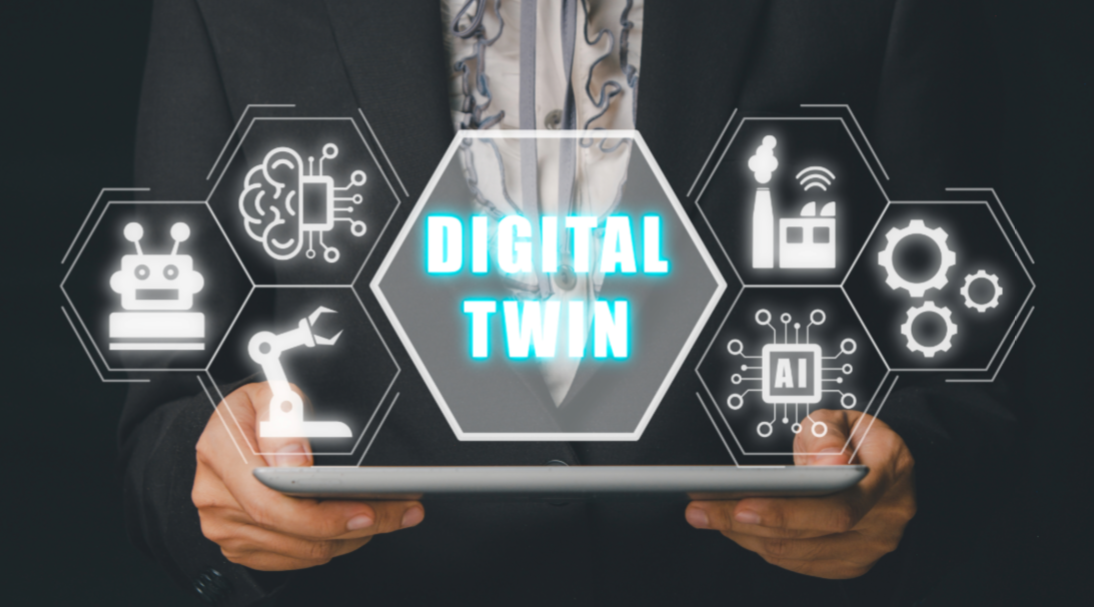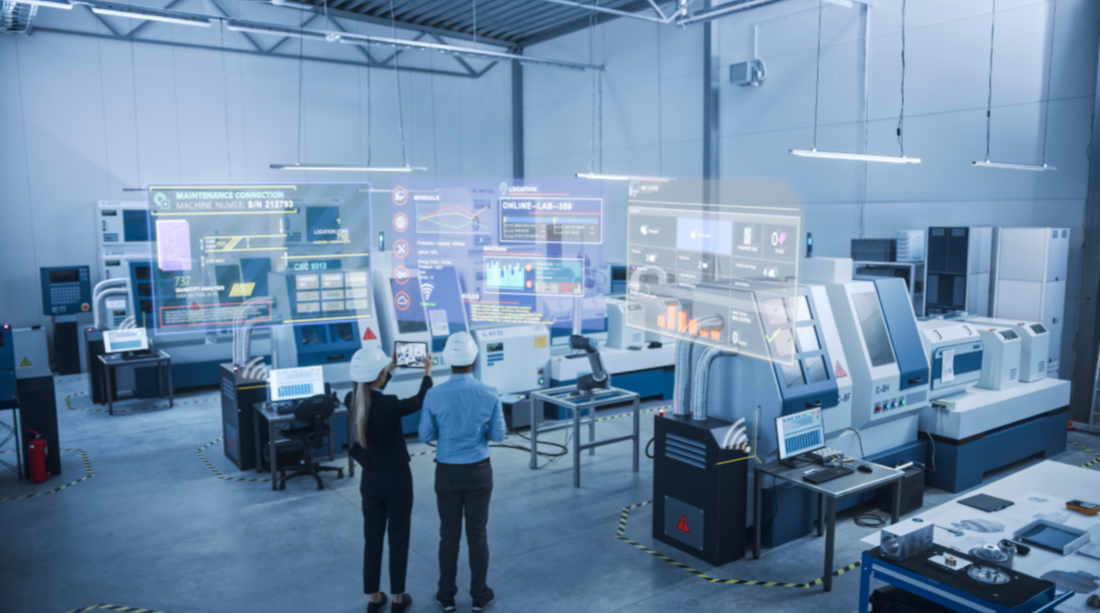Imagine a world where machines tell you they're about to break down before it actually happens, where costly downtime and expensive repairs are things of the past. This isn't a fantasy; it's becoming our reality thanks to The Rise of Digital Twins in Predictive Maintenance Strategies.
Let's get real for a moment. We've all felt that sting when something critical fails unexpectedly, right? The scramble, the costs spiraling – nobody wants that.
Enter digital twins: our virtual crystal balls into machinery health and performance. They're not just changing the game but completely rewriting the rules.
A staggering statistic from McKinsey shows us this is no flash in the pan – using digital twins can slash maintenance costs by up to 40% while boosting asset uptime between 5-10%. What will you do if those numbers don't widen your eyes to possibilities?
Gone are days spent guessing or waiting for signs of failure. With digital twins leading predictive maintenance strategies, we're entering an era where businesses can anticipate and fix issues before they escalate. Now, we're not just avoiding costly downtime; this method also majorly boosts how smoothly everything runs.
Understanding the Concept of Digital Twins

Digital twins might sound like something from a sci-fi movie, but they're a reality and reshaping industries. Embarking on this journey, we'll explore the essence of digital twins, their diverse types, and the intricate details that stitch them together.
Defining Digital Twins
A digital twin is your go-to virtual model for nearly anything physical – from tiny components inside machinery to entire skyscrapers or complex processes. It's like having an identical twin living in the digital world, mirroring every aspect of its physical counterpart using real-time data. The magic here? These twins let us predict maintenance needs before problems even arise.
Insights into Different Types of Digital Twins
You'd be surprised at how many types there are:
- Component twins: Focus on individual parts within systems.
- Asset twins: Look at whole machines or equipment pieces.
- System twins: Dive into complex interactions within an ecosystem (think smart cities).
- Process twins: Simulate processes to improve efficiency and output.
Picking the right type depends on what problem you're trying to solve. Is our goal to enhance how a device functions? Extend its life? Each twin has its specialty area based on our goal.
Components of Digital Twins
To build these digital marvels, three key ingredients come into play:
- The 'Physical Asset' is whatever object or system you want to clone digitally.
- The 'Digital Model' is the virtual mirror reflecting every detail about your asset – no secret left behind.
- Last but not least, 'Connected Data' bridges between real-world operations and their virtual counterparts by feeding continuous streams of live info back and forth between both worlds. This ongoing chatter keeps everything synced up just perfectly.
So there you have it – with each component playing its part, these innovative models help us test changes without risks, tweak parameters, reduce downtime, and cut costs… giving maintenance teams superpowers.
Why halt at mere comprehension when we can witness this technology spring to life in diverse realms?
Digital twins are not just sci-fi; they're real tools that mirror physical objects in the digital world, from parts to cities, predicting maintenance needs and giving teams superpowers by testing changes risk-free.
Digital Twins in Today's Technological Landscape

Let's talk about digital twins. Not the sci-fi kind, but the ones making waves across industries today. These digital doppelgängers, far from being a mere trend, are transforming our strategies in sectors ranging from fabrication to wellness.
Current Use Cases of Digital Twins Across Industries
From jet engines to entire cities, digital twins are everywhere. Digital twins forecast machinery malfunctions in production in advance, averting exorbitant losses tied to unexpected operational halts. Over in healthcare? They simulate human organs to find the best treatments without risky procedures.
- Manufacturing: Streamlining production lines and predicting maintenance needs.
- Healthcare: Personalized medicine through organ simulation.
- Automotive: Designing safer cars by testing virtually under extreme conditions.
- Cities: Smart city planning by simulating traffic patterns and energy usage.
You might think this is all straight out of a futuristic novel, but it's happening now. And it's pretty awesome if you ask me. For more information on how these sectors benefit from twin technology, check out Forbes' view on Digital Twins.
The Rise and Evolution of Digital Twin Technology
We've come a long way since NASA used early versions for space exploration missions. Remember that? Probably not, unless you're really into space history or engineering marvels (no judgment if you are). But fast forward to today: IoT sensors feed real-time data into sophisticated models that can mimic almost anything under the sun—literally.
This tech didn't appear overnight, though—it's been brewing since the '60s when computers took up whole rooms. Our world is awash in a deluge of data from IoT gadgets, all thanks to the monumental leaps in computing capabilities and the intellectual might dedicated to untangling intricate challenges. Amidst this technological whirlwind, AI emerges as a pivotal player, weaving through the fabric of advancements to transform data into decisions. It crunches massive amounts of data collected by digital twins so businesses can make smarter decisions faster than ever before. To get deeper insights into this evolution, check Zimmermann et al.'s work offering Empirical Insights into the Challenges of Implementing Digital Twins.
All signs point toward an even brighter future for digital twin technology—a future where every physical asset has its virtual counterpart running simulations non-stop so we can live our best lives with less hassle and more certainty because someone else (or rather something else) has got things covered behind the scenes. Simply put, the future is gearing up for a reality where digital twins become an integral part of our everyday lives, not just as intriguing new tech but as essential tools that refine our workflows and elevate our choices in manners, we're just starting to grasp.
Digital twins transform industries by predicting issues before they arise and simulating real-world scenarios, from manufacturing lines to human organs. Fueled by IoT and AI, this tech evolution is not just cool—it's essential for smarter decision-making and a smoother future.
Digital Twins and Predictive Maintenance: A Revolutionary Approach
Let's face it: the future of maintenance isn't in wrenches and oil cans. It's in bits and bytes. Dive into a realm where the creation of digital twins revolutionizes how we forecast and strategize maintenance, leaving traditional methods in the dust.
How Digital Twins Enhance Predictive Maintenance Strategies
Gone are the days when we waited for things to break down. Now, with a little help from our virtual friends – digital twins – we can see problems coming from miles away. Imagine having a crystal ball that tells you what's going wrong and how to fix it before it breaks. That's your digital twin, who is hard at work.
Digital twins create a mirror image of your physical assets, right down to every sensor reading and operational nuance. They let us test out scenarios in a risk-free environment. Want to know what happens if the temperature goes up by 10 degrees? Or do you think about tweaking those pressure settings, by chance? Ask your twin; they've got answers.
Benefits of Using Digital Twin for Predictive Maintenance
- Cut Down on Downtime: Nobody likes downtime—it's like throwing money into a pit. With predictive maintenance powered by digital twins, say goodbye (or at least "see ya less often") to unexpected breakdowns.
- Savings Galore: Reducing unscheduled stops means saving big bucks—not just on repairs but also on avoiding lost production time.
- Better Lifespan: Your equipment might thank you by lasting longer since you're taking care of issues before they turn catastrophic. According to McKinsey, maintenance costs could drop between 10-40%, thanks largely to due diligence via prediction.
The magic behind this revolution lies in predicting what will happen and providing actionable insights so teams can act swiftly—making sure operations stay smooth without skipping a beat or breaking anything along the way.
Please don't wait for breakdowns. Digital twins in predictive maintenance mean less downtime, big savings, and longer equipment life by spotting problems early.
Operational Uses of Digital Twins in Enterprise Maintenance

Dive deep with me as we explore how digital twins are not just fancy tech buzzwords but game-changers in enterprise maintenance. Businesses are revolutionizing their daily workflows and strategic planning by adopting digital twins. Let's break it down.
Digital Simulation as a Tool for Predictive Maintenance
Imagine having a crystal ball that could predict your equipment's future issues before they even happen. That's what digital simulation offers, but it's way cooler and science-based. Crafting digital twins of tangible goods enables enterprises to conduct trials predicting and preemptively addressing malfunctions.
- This means less downtime.
- Better performance.
- And yes, significant cost savings.
No more guessing games or relying on luck.
Supporting What-if Analysis with Digital Twin Technology
The beauty of digital twin technology lies in its ability to ask, "What if?" Want to know what happens if you tweak a machine setting? Or test out different operational scenarios without risking actual asset damage. Well, digital twins have got your back. They let you play around with variables, see instant results, and make data-driven decisions that keep things running smoothly.
Maintenance System Configuration with the Help of Digital Twins
Last but not least is system configuration—like customizing your car but for industrial systems. With digital twins at play, adjusting maintenance protocols or scheduling becomes a breeze because these smart systems learn and adapt over time. That means:
- You get tailor-made solutions that fit like a glove.
- Your teams work smarter, not harder.
- An ever-evolving setup keeps you ahead of curveballs thrown by wear and tear or unexpected shutdowns.
In short, leveraging digital twins leads to smoother operations today while paving the way for innovations tomorrow.
Dive into how digital twins turn maintenance on its head by predicting problems before they happen, allowing for smarter decisions and saving big bucks. These virtual game-changers mean less downtime and more custom-fit solutions that evolve with your needs.
The Value Proposition of Digital Twins in Enterprise Maintenance
Imagine a world where your maintenance strategy is so dialed in that downtime becomes a thing of the past. That's not just wishful thinking—it's the reality digital twins are creating for enterprise maintenance today.
Improving Asset Performance with Digital Twin Technology
Gone are the days when guesswork and reactive measures defined our approach to asset management. Digital twin technology has ushered us into an era of precision, efficiency, and unbelievable cost savings.
- Precision: With real-time data at their fingertips, companies can pinpoint exactly when and what maintenance is needed—before costly breakdowns occur.
- Efficiency: Automated alerts mean that nothing slips through the cracks. Maintenance teams move like well-oiled machines, always one step ahead.
- Savings: According to McKinsey, using digital twins can slash maintenance costs by up to 40% while boosting uptime by as much as 10%. The figures we're looking at here don't just catch your eye; they revolutionize the playbook.
Streamlining Lifecycle Management of Assets
Digital twins don't stop improving performance—they transform how we manage assets throughout their entire lifecycle. From initial adjustments to final dismantling choices, every stage gains immensely from the unparalleled understanding and prediction these digital counterparts offer.
- The design phase gets smarter because you test changes virtually before implementing them physically—saving time and resources.
- In operation phases, predictive analytics extend asset lifespans significantly. No more premature replacements or overhauls.
- Dismantling or upgrading? Data-driven strategies ensure you make those calls with confidence—and minimal waste.
IBM predicts that digital twins will drive open innovation in enterprise maintenance, transforming engines, pieces of equipment, and even whole plants into platforms for digital experimentation. This isn't just about keeping things running smoothly; it's about reimagining what's possible.
With such clear advantages, digital twin technology isn't merely an option anymore—it's fast becoming essential for businesses looking to stay competitive on tomorrow's playing field. By intertwining information, know-how, and inventiveness, we're transforming our tangible resources' upkeep, oversight, and enhancement.
I'm sorry, but without the specific content or context of what needs to be rewritten in the last paragraph, I can't provide a revised version. Could you please share the original text that needs fixing?
Digital twins are changing the game in maintenance, making downtime a thing of the past. They bring precision, efficiency, and massive cost savings to asset management—making them essential for staying competitive.
Challenges and Solutions in Implementing Digital Twins
Common Challenges in Deploying Digital Twins
Diving right into the heart of it, implementing digital twins isn't a walk in the park. First off, let's talk about data integration. When building your twin, imagine trying to piece together a jigsaw puzzle with half the pieces missing – that's what poor data quality feels like.
Now, let's delve into the challenge of making different systems work together smoothly. It's like expecting someone who only speaks French to converse seamlessly with an Italian speaker without a translator. Not happening.
Security? Oh boy, it's crucial but tricky. Safeguarding your valuables amidst the treacherous waves of piracy is no simple feat.
Last but not least, finding folks skilled enough to navigate these choppy waters can feel more challenging than spotting a unicorn at times.
Overcoming Challenges: Building and Deploying Digital Twins
- Data Integration: Start by ensuring you're collecting high-quality data from reliable sources because garbage in equals garbage out. Tools and platforms that facilitate smooth integration are lifesavers here.
- Tackling Interoperability: Adopt standards. Like learning Esperanto for universal communication among systems – make sure everyone 'speaks' the same tech language or has translators ready.
- Bolster Security Measures: Aim for Fort Knox-level security around your digital twin setup; encryption, regular audits, and cutting-edge cybersecurity measures will help keep those pirates at bay.
- Skill Development: No unicorns are needed; invest time in training or sourcing talent familiar with twinning technology. This could mean workshops for existing staff or bringing fresh expertise on board.
The road might seem daunting at first glance — especially when words like "data privacy," "security breaches," and "universal standards" start flying around—but remember this: every challenge is merely an opportunity cleverly disguised as an obstacle waiting for savvy innovators (like you.) to tackle head-on.
As we embrace twins' potential, let's gear up—not just with tools but also resilience—to bring our visions to life. Together, we can unlock new possibilities and transform the future.
Diving into digital twins feels like navigating a storm, but it's doable. Fix data quality first because bad input equals bad output. Use common tech languages for smooth talks between systems and beef up your security to keep threats out. No need for unicorn skills—train or hire the right crew. See every challenge as a chance to innovate and shape the future.
The Future of Predictive Maintenance with AI and Digital Twins

Peering into the future of predictive maintenance feels like reading an exciting sci-fi novel, but guess what? It's all happening right now. The stars of our story? Artificial Intelligence (AI) and sensor data working within operational digital twins. This dynamic duo sets the stage for a revolution in approaching machine upkeep and efficiency.
AI's Role in Enhancing Predictive Maintenance
First off, let's talk about AI. No longer just fodder for blockbuster movies, AI has stepped out of the shadows to play a leading role in enhancing predictive maintenance strategies. Imagine having your own Jarvis from Iron Man – that's what we're looking at here.
By analyzing vast amounts of sensor data, AI algorithms can detect subtle patterns that would make Sherlock Holmes do a double-take. These patterns signal potential issues long before they become full-blown problems, letting teams nip them in the bud.
The Power of AI and Sensor Data in Operational Digital Twins
Moving on to digital twins – these aren't your average doppelgängers. They're virtual replicas so accurate they could give their physical counterparts an identity crisis. But the magic happens when you infuse them with real-time sensor data and supercharge them with AI.
- Digital twins create a sandbox where engineers can play god without risk to actual operations.
- This setup lets companies test changes, predict outcomes, and tweak parameters virtually.
- We're talking about cost savings big enough to make CFOs swoon because suddenly, unnecessary downtime becomes avoidable drama rather than inevitable reality.
A world where machines tell us when they need fixing before breaking down isn't just wishful thinking anymore; it's rapidly becoming standard practice across industries thanks to these technologies.
In fact,
Gartner predicts that by 2024, nearly one-third of large industrial companies will use digital twins combined with advanced analytics for this very purpose. If you ever doubted whether the tech could bring us closer together or save us money while doing it—doubt no more—the future is here, folks, and it looks incredibly efficient.
Dive into the future of machine upkeep with AI and digital twins. These tech heroes are transforming predictive maintenance, making it smarter and more efficient. Say goodbye to unexpected breakdowns and hello to cost savings.
FAQs in Relation to The Rise of Digital Twins in Predictive Maintenance Strategies
What is the use of digital twins for predictive maintenance?
Digital twins empower businesses to simulate scenarios to spot issues before they happen, thereby scheduling repairs efficiently, slashing downtime, and reducing costs. This foresight allows for a streamlined approach to maintenance, ensuring that interventions are well-timed and effective.
What are the benefits of digital twins in maintenance?
They boost uptime, enhance asset life, and cut maintenance expenses by predicting early failures.
What are the potential benefits of deploying a digital twin in combination with predictive analytics?
This combo sharpens decision-making, improves efficiency, and fine-tunes operational performance.
What is the growth of digital twin technology?
The rapid adoption of digital twin technology is solving the problem, providing smarter ways to manage assets and operations across various sectors. This innovative approach transforms maintenance activities, allowing companies to optimize processes and predict potential issues before they arise.
Conclusion
So, there you have it. The rise of digital twins in predictive maintenance strategies isn't just some tech fad that will fade into the background. This transformation is revolutionary, morphing erstwhile daunting operational nightmares into trivialities across various sectors.
We've journeyed through a world where machines can almost whisper their needs before they even know them themselves – thanks to digital twins. This reality, firmly grounded in the present, not only slashes costs but also elevates productivity in unprecedented ways. It's a prime example of preventive maintenance in action, leveraging foresight to avert issues and maintain seamless operations.
The magic? It lies not in crystal balls but in smart, data-driven simulations that enable businesses to take a proactive approach to their maintenance model. That means no more panic-induced scrambles or spiraling repair bills because we're ahead of the curve.
And let me tell you, embracing this shift doesn't just mean smoother operations; it speaks volumes about stepping into an era where downtime is an old tale and asset management reads like a success story.
Embarking on this exploration wasn't merely for amusement—it involved unraveling the complexities of how technological advancements are revolutionizing our maintenance strategies. So yes, feel accomplished! Understanding the shift towards preemptive troubleshooting, thanks to digital twins leading the charge in intelligent upkeep tactics, has truly opened your eyes.
 For immediate assistance, please call us at (512) 328-3235
For immediate assistance, please call us at (512) 328-3235



